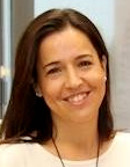July 20, 2018
VIBASS2 - Invited Talks
From Multivariate to Multidimensional Bayesian Disease Mapping
Multivariate disease mapping deals with the joint geographical mapping of several diseases and it has become an important research field for biostatisticians and spatial epidemiologists in the last years. The key issue is to map multiple diseases accounting for their correlations and improving in this way univariate estimates of the geographical distribution of risk from each disease. This approach allows obtaining, in addition to risk estimates, other interesting results as the correlation matrix between diseases.
In the same manner as multivariate smoothing for several diseases improves risk estimates, several other variables, such as sex, age group, race, time period, and so on, could also be jointly considered to derive multivariate estimates.
In this talk we show a friendly multivariate disease mapping model proposal and how this proposal can be adapted to include more than two variables (geographical units and at least two more variables). We introduce a formal framework for the analysis of multivariate spatial data arising from the combination of several variables, what we have called Multidimensional Disease Mapping. We illustrate its performance on the study of real mortality data in Comunitat Valenciana (Spain)

Paloma Botella Conselleria de Sanitat Universal i Salut Pública
Markov Switching Models For High-Frequency Time Series From Automatic Monitoring Of Animals
In ecological studies data loggers can be applied to mammals, fishes, and birds to automatically monitor the movements of animals to study their behaviour. Sensors applied to animals generate high-frequency complex time series that are modelled along with environmental dynamic variables. Animal movement time series usually exhibit high autocorrelations at the higher lags, with a slow decay, and asymmetric cycles. Both issues suggest to handle the series as realizations of a stochastic regime switching process. Hence, Markov switching autoregressive models (MSARMs) can be considered. Covariates can also be incorporated into the model through the hidden Markov chain: the transition probabilities are time-varying and dependent on dynamic explanatory variables. Our modelling is motivated by a real application: the time series of depth profiles recorded by Data Storage Tags applied to apper skates (Dipturus intermedia) caught in the Sound of Jura (Scotland) in 2012. Inference is developed under the Bayesian paradigm by Markov chain Monte Carlo (MCMC) algorithms. We demonstrate that MSARMs are very good tools to fit the long memory, non-linear, non-Normal, non-stationary processes of depth profiles, and to cluster the observations into regimes of movement.

Luigi Spezia Biomathematics and Statistics Scotland, BioSS, Aberdeen, UK
EVENTS





